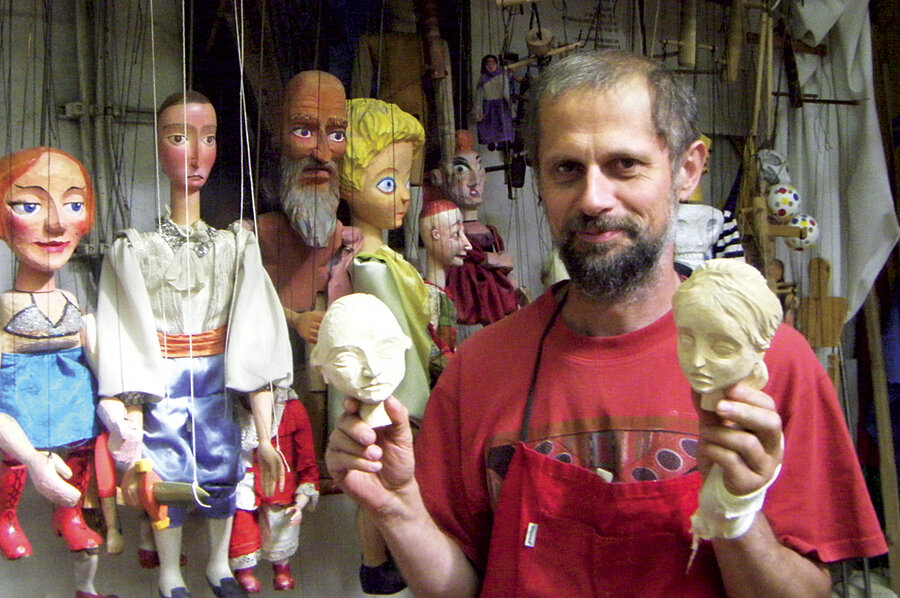Czech puppetry tradition comes with strings attached
Loading...
| Prague, Czech Republic
• A local, slice-of-life story from a Monitor correspondent.
Bins of body parts are stacked in Miroslav Trejtnar’s Prague studio. Three heads line his workbench. A smell of wood permeates the air.
“I don’t get so many requests to make puppets nowadays,” says Mr. Trejtnar, a traditional Czech puppetmaker. “I always made puppets for myself and others, but now I am more interested in teaching it.”
Czech puppetry dates back to the late 1800s, when puppeteers traveled by wagon to entertain villagers. The nation was still governed by the Austro-Hungarian Empire, so Czech nationalism wasn’t encouraged. Puppets were a way to keep cultural and language traditions alive through storytelling, says Trejtnar.
Under communism, puppet theaters were state-owned and focused on Russian theater traditions and stories. Even today’s puppet theater is more geared toward tourists than true Czech tradition.
“I never intended to keep the tradition alive.... I just ... want to pass [knowledge] along,” he says. “Puppet theater is a ... comprehensive art form; theater, literature, visual, music, sculpting, painting all together.” Trejtnar estimates he has taught more than 400 students from around the world over the past 10 years. Students learn carving, painting, how to make costumes, and puppet design.





